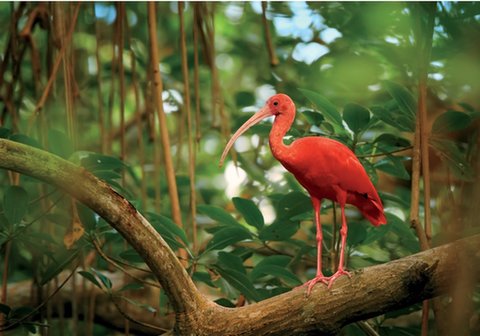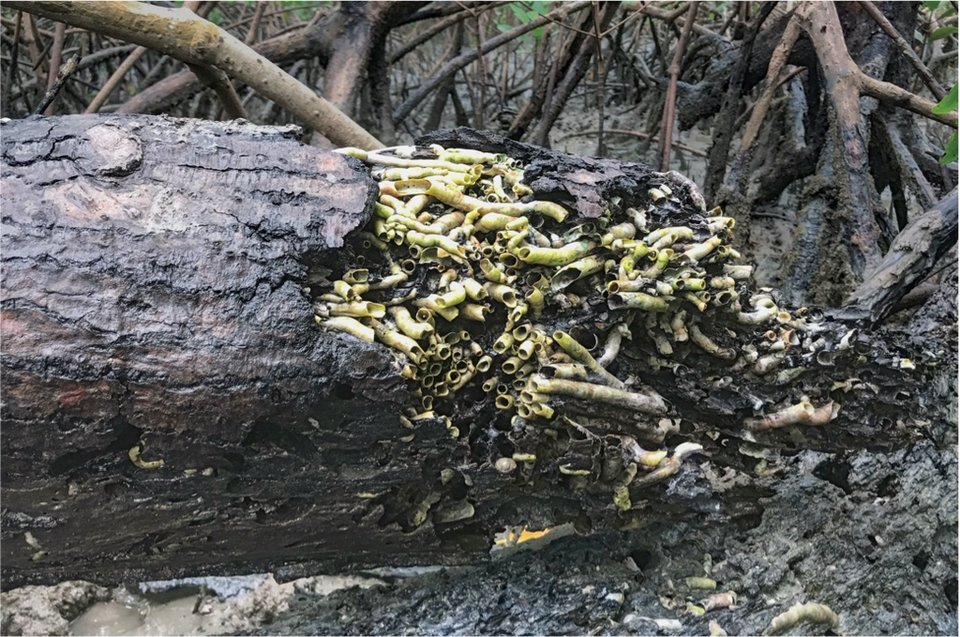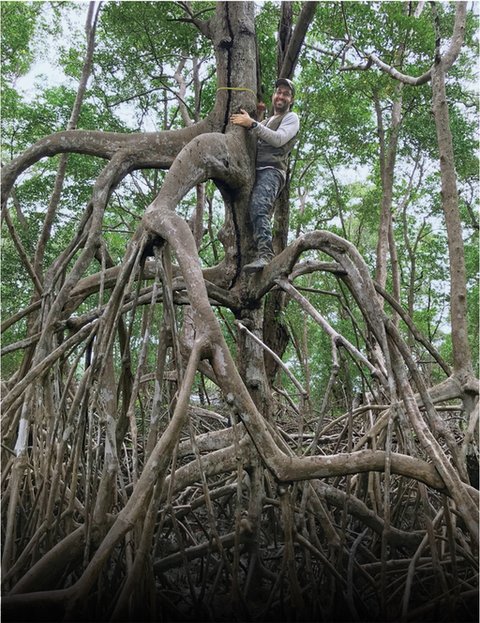North
America
South
America
Pacific
Ocean
Brazil
Iworkinaplacewherelandandoceanwatermeet.Itisamangroveforest.Mangrovesareagroupoftrees.Theirtangledrootsstickupfromthemud.Theoceanwaterissalty.Tidesrushinand out.
Thesewetlandsaretough.Theyformalivingbarrier.Theyprotectcoastlinesfromstorms.Treerootsslowwavesandweakenwinds.Theirthickrootstrapandbuildsoil.Likeallwetlands,mangrovesalsostore carbon.

Thisred birdstandsoutinthe mangrove.

Shipwormseatdead wood.
ThePowerofMangroves
Mangrovesarefulloflife.Crabs,fish,birds,andinsectsfindfoodandhomeshere.Shipwormseatdeadwood.Thatkeepsthetreeshealthy.Peopleandanimalsdependon mangroves!

Fromhere,Icanseethewhole swamp.